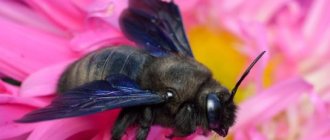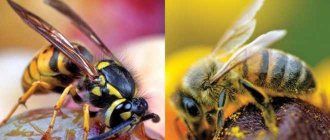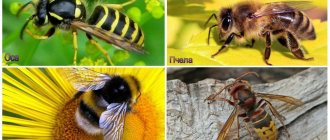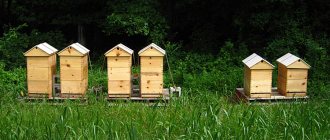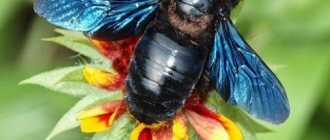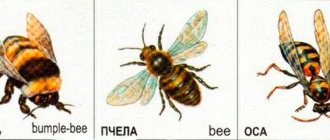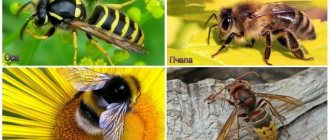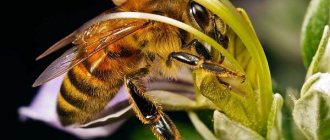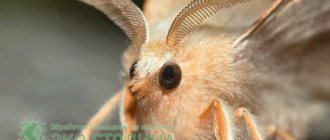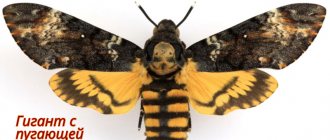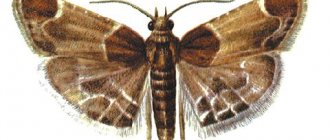Everyone who has constant contact with nature paid attention to large black bees, which could be mistaken for a fly or bumblebee. However, this type of insect is neither one nor the other. Carpenter bees from the Apidae family belong to the species of solitary bees and are endangered, therefore they are listed in the Red Book
The habitat of the carpenter bee (xylocope) extends to the territory of central and western Europe, northern Africa, and in the east to Mongolia, with the exception of northern latitudes. On the territory of Russia, the blue bee is distributed in the Volga region and the Central Black Earth region, the south of the Stavropol and Krasnodar territories, Moscow, Tula, Arkhangelsk, Leningrad and a number of other regions.
The carpenter bee has up to 500 species, which includes not only bees, but also the purple carpenter bee, as well as several names of fossil representatives of the family. However, only the common carpenter bee lives on the territory of Russia, Ukraine, and Belarus.
bumblebee carpenter
The carpenter bumblebee is distinguished by its ability to build tunnels inside wood, in which it breeds offspring and overwinters.
Insects choose trees for their nests that are old, dry, loose, with peeling bark; rotten stumps are also suitable. A tree or other place where a nest is formed, if its condition is suitable, bees can use for up to 14 years in a row, settling in them from year to year. Having chosen ready-made, but old, holes once left by other representatives for laying eggs, bees are able to repair them, holding the wood together with their saliva. The main condition for choosing a place for a nest is dryness and softness of the material. Insects will never choose a fresh, healthy tree. If possible, several bees make holes in the same material next to each other.
In the wood, with the help of powerful jaws, insects gnaw out a hole - an even circle, with a diameter the size of a purple bee. The passage is made from the south side of the tree and first has a horizontal direction, and then goes down and inside the tree at a distance of about 30 cm. Such a tunnel is needed for laying larvae, which will be in it one above the other and will independently go through all stages of development to a fully formed adult individual .
Interesting. The carpenter bumblebee makes a loud sound not only while flying, but also when gnawing a hole in a tree.
In the passage gnawed into the wood, the female begins laying: at the very bottom the bee adds mixed nectar with pollen for nutrition and development of the larva, the first egg is produced, then the cell is sealed, a partition is made of wood. A new egg is laid on the formed septum, and the process is repeated 6 to 10 times, the gnawed passage is completely filled. The final sealing of the entrance is done from above, so that the hole will not be visible. The female will guard the laying site for some time and then fly away. At the end of the summer season, the female that laid the eggs most often dies.
The entire clutch, and sometimes adult females, remain overwintering in the nest and fly out the next season at the beginning of summer. The formed individuals fly out almost simultaneously, gnawing through the partitions. Overwintered old females give birth to another offspring in the new season, often in the same place. New females will have to find their own place for a nest.
bumblebee carpenter
Behavior
The purple bee begins to fly from mid-April. The flight ends around the end of September.
As a habitat and for breeding offspring, the purple bumblebee chooses typical carpenter's places: fence posts, utility poles, dry tree trunks, rocks, abandoned rodent holes. Prefers open places: near populated areas, on the edge of the forest. In any habitat, choose the sunny side, not the shade. The purple bee chooses a location next to a person not because of its proximity (it prefers privacy), but because of the abundance of suitable materials for building nests.
Over thousands of years of coexistence with humans, purple carpenter bees have developed certain habits. Sometimes you can see them inspecting panel or concrete houses. They are looking for a suitable rotted beam or ceiling. Human activity forces them to such searches. Forestry departments clear forests of dead wood, sanitary felling deprives carpenter bees of the opportunity to quickly find suitable housing.
New generations of bumblebees are in no hurry to leave their father’s house for good: up to 10 generations can live in one nest, or until the wood deteriorates. The food of adult purple bees is nectar and plant pollen.
Black bumblebee with blue wings
The insect is called a bumblebee because of its size and loud buzzing sound when flying. Carpenter, or tree bumblebee, due to the peculiarities of building nests in trees.
What does it look like
There are black and white bumblebees, as well as those with yellow, orange, red or gray shades of lines. Only the carpenter is distinguished by its exclusively black shiny color of the entire body with a blue tint on the abdomen. Also impressive is the size of the insect, reaching 3 cm in length, and its large, wide head with black eyes. The hair on the body is sparse, which is why parts of the body look glossy smooth.
Black shemale
The insect is sometimes considered a fly or bumblebee, but the black bee is a member of the genus Xylocopa, a species of common bee. There are several hundred varieties of this type of bee; insects are the oldest representatives of the fauna.
The bee's wings are transparent, blue or purple, with a jagged edge and dark veins.
Additional Information. The male carpenter bumblebee is distinguished by its smaller size, lack of a sting and a reddish tint to the lower part of the antennae, which in the female are completely black.
Some males have brown hairs on their bodies.
The nectar and pollen that a bee collects are needed only for its own nutrition and for placement in cells for raising offspring, so such bees do not produce honey that can be collected by humans. Even the structure of the legs does not allow for the collection of large amounts of nectar. The blue bumblebee does not have pollen baskets on its limbs; nectar sticks to their long, thick hairs.
Distinctive features
Unlike the strict hierarchy that exists in the family of ordinary honey bees, the carpenter bee is a solitary insect that does not have a main queen or a swarm. Each female creates her own nest and brood. The life of the gray bumblebee is seasonal and lasts 6 months during the warm season. Sometimes individuals can live for two seasons, overwintering in a dormant state in a hole in a tree built in the summer.
Distinctive features
The bee can fly long distances in search of nectar, is hardy, and is not bothered by bad weather or precipitation. This feature, which differs from the habits of ordinary bees that do not fly out of the hive in the cold, gives the insect valuable qualities as a pollinator.
To attract a bee, the male performs courtship rituals
The bumblebee climbs onto one of the high branches and begins to buzz loudly to attract attention. If the female does not react, the bumblebee can climb into her nest several times
This behavior is comparable to courtship periods in some birds.
Additional Information. The male black bee lives in a territory where several females are present.
Characteristics
The bumblebee is a large insect whose diet includes pollen and nectar. Their competitive advantage over bees lies in their warm-blooded body. This feature was formed due to the fact that the pectoral muscle contracts at a rapid pace, dispersing blood. Therefore, the bumblebee is not afraid of frost, that is, it leads a cold-resistant lifestyle.
Scientific classification:
- domain – eukaryotes;
- kingdom - animals;
- phylum – arthropods;
- class - insects;
- order - Hymenoptera;
- family - real bees;
- genus – bumblebees (Bombus).
At first glance, a bumblebee looks like a bee, but the adults still do not resemble each other in everything. The main difference is the thickness of the cover. The body of a bee is covered with sparse hairs, while bumblebees have a shaggy coat.
Characteristics:
- dense, thick body - wider than that of a bee or wasp;
- a smooth sting without serrations in females and working specimens;
- body length (size) – up to 3 cm;
- weight – worker up to 600 mg, uterus up to 1 g;
- color – black and yellow stripes, sometimes there are orange-red rings or completely black color;
- length of the proboscis is 7–20 mm (the task is to penetrate the flower for nectar).
Bumblebees are frost-resistant insects. The appearance of this feature is explained by the rapid contraction of muscles and the presence of thick integument. The hairs warm the body, so adults are not afraid to fly out in cold weather, early in the morning and late in the evening. To cool down in the heat, the bumblebee secretes a drop of saliva - this method helps facilitate flight due to the evaporation of liquid and cooling.
Lifestyle and nutrition
The whole life of a bumblebee revolves around flowers and offspring. The queen begins spring by choosing a shelter for her nest. Most often these are burrows. The queen mother usually looks for a free burrow in a well-warmed area, but sometimes chases away a mouse or other host. The female creates a microclimate in the nest. Water should not flow into it. The temperature regime is also vital for the development of larvae.
The home should be neither hot nor cold. In hot weather, bumblebees work like fans, blowing pupae and larvae with rapid movements of their wings.
Moss, grass, and wool are used in construction. Species such as meadow, horse and rock bumblebees build nests both underground and on the ground. Other species prefer to nest in hollows, birdhouses, and secluded places in human buildings. To strengthen and camouflage the nest, wax is used, which is secreted by the abdominal glands. The queen collects wax with her paws, chews it and then uses it.
Once settled, the queen places the eggs and a mixture of honey and pollen into a closed wax capsule. When the larvae eat the food, it gnaws a hole for them to feed further. At the same time, new capsules are built, eggs are laid again and again. Working individuals collect nectar all day, even in light rain, to feed their younger brothers and sisters. They are even able to replace the queen if she dies and lay eggs, from which only males emerge. Over the summer, the family grows to 100 - 200 insects, sometimes up to 500. In artificial heated houses, the family can grow to a thousand individuals.
The larvae feed on fresh nectar and honey. Bumblebee honey differs from bee honey:
- contains more water, more liquid;
- not so sweet;
- does not store for the winter;
- less fragrant.
The number of bumblebees is reduced:
- use of chemical plant protection products;
- overgrazing;
- spring burning of dry grass;
- disorderly recreational use of natural areas (mass events, etc.);
- destruction of nests during haymaking and cultivation of meadows.
Adults eat nectar and pollen. The highest density of insects is observed on rich honey plants. Clover is preferred. In early spring, primroses and shrubs of the willow family are of great importance for nutrition.
First aid for a bite
Treating a bumblebee bite
The most important question that interests many people is: how to treat bumblebee bites. Actions usually depend on the severity of the consequences of the bite:
- If a sting is visible in the bitten area, it should be pulled out with tweezers, previously disinfected.
- Then this area must be anointed or treated with an antiseptic by applying a swab with alcohol, hydrogen peroxide or a solution of potassium permanganate; there is no need to make efforts to squeeze out the poison so as not to introduce infection into the wound.
- Applying a cold compress will help reduce swelling and relieve pain.
- Drink an antihistamine to relieve a possible allergic reaction, even if there is no predisposition to it: Suprastin, Erius, Zodak, etc.
- In the following hours, it is necessary to increase fluid intake (water and tea with sugar), which will reduce the likelihood of a toxic reaction.
- If the patient's condition worsens, it is better to call a doctor.
When stung by a bumblebee, it is prohibited:
- try to slam or crush the insect, because toxic substances released will attract the rest of the colony;
- comb the bitten area;
- take sleeping pills or alcohol.
Species of black tree bumblebees
It is easy to confuse different types of tree bees. For example, the common xylocopa will be larger than the purple one. There is also a difference in the color of the wings.
Violacea, Valga, Iris
Blue color is the attribute of the purple carpenter. In total, the genus Xylocopa includes 500 species.
Habitat
All "carpenters" live in dry or rotten wood. Typically, bees choose trees in groves and deciduous forests. Both poles and wooden buildings are used. Habitat of Xylocopa Violacea:
- Countries of Southern Europe, the Caucasus, Turkey, Ukraine, South-West Asia, the Middle East;
- In Russia: the Republic of Crimea, the regions of Voronezh, Belgorod, Kursk and Ryazan, Samara, Penza, also Astrakhan and Vladimir, Krasnodar Territory and Stavropol Territory. The species is distributed in Chechnya, Dagestan, Adygea, Ingushetia and Kabardino-Balkaria; it is found in Tatarstan, Bashkortostan, Mordovia, in the Rostov and Tambov regions.
The bairach forest consists of broad-leaved trees on the slope of a ravine or ravine.
The purple bee, belonging to the genus of carpenters, settles in soft wood, ignoring beech, oak and ash.
Dry wood, Violacea species
Protection measures:
- Use of coniferous wood (not 100% protection);
- Treatment with two layers of varnish: the first layer is used as impregnation, etc. The coloring is not suitable.
An atypical case was observed in Austria in 2004. Bees have gnawed holes in polystyrene slabs.
In any case, the passages turn out to be shallow, especially when it comes to buildings. A rare but possible habitat is the bark layer of a coniferous tree if the bark thickness exceeds 3 cm.
Security
The bee species Xylocopa Violacea was included in the Red Book of the Caucasus regions, as well as the Krasnodar Territory and Stavropol Territory. In Crimea, Volgograd and Samara regions, this species is also protected.
Xylocopa Violacea
Interestingly:
- Xylocopa Valga, that is, “common carpenter” is protected throughout Russia and Ukraine;
- In Belarus, the species Xylocopa Violacea is not protected, but it is found there (Gomel), and this species is included in the Red Book of Ukraine.
The list of protected fauna in each region is supplemented. So the list given here is not complete.
The hornet that resembles tree bees is called Vespa Dybovskii. It was included in the Red Book of the Chita Region. The usual name is the Black Hornet, a pest of all apiaries.
Three types of bumblebees
Well, bumblebees, and not only arboreal ones, do not harm apiary bees. In most regions, the species Bombus Lapidarius, Hypnorum and Terrestris are protected. Translation: stone, hollow, earthen.
Selection
The genus Xylocopa also includes insects with altruistic behavior. The female guarding the nest may die. However, females of the species Xylocopa Sulcatipes and Pubescens are distinguished by altruism: having found an abandoned nest, these bees begin to take care of it.
Xylocopa Pubescens
This option is not typical for Valga and Violacea species.
When a nest is not guarded, it may be occupied or destroyed. And the Pubescens and Sulcatipes species are less vulnerable, which contributes to the variability of these bees.
Habitats
The insect is thermophilic, so its habitat is the south of the Middle Zone. The carpenter bumblebee is included in the Red Book of Ukraine and Russia. In Ukraine, it lives mainly in the southern regions, and is rarely found in the rest. You can meet a bumblebee in Crimea. There are in Russia, Belarus, but not in every region. In Russia it is found only in the southern and western regions, for example, in the Belgorod region, in Belarus - in the Gomel region.
From foreign countries, the bumblebee is widespread in Turkey, Western Asia, and the Middle East. There are in the Caucasus, in the countries of Southern Europe. Recently, the bumblebee's habitat has expanded. Cases of carpenter bees have been reported in the south of Great Britain, near Novosibirsk. Scientists associate this with global warming.
Popular varieties of black bees
Highly social bees are considered separately. This group differs not only in behavior and structure, but also in its body structure.
- Ordinary. The insect is very similar in color to a wasp. The black insect is small in size and not aggressive; the wasp is more irritated. Yellow and black stripes can be seen on the body. They build underground passages.
- Honey-bearing. They accumulate a large amount of honey in the honeycombs; they are small in size, black in color, and have brown and yellow stripes on the belly. Beekeepers breed these bees to produce large quantities of honey. Such bees can be different, there are black and white, pure black. They all differ in their feeding habits - they prefer different nectar, and also differ in their lifestyle - you can find semi-social, social and solitary bees. If you keep a black breed, you need to take care of protection. Such a bee is very painful to bite. Some sting several times, so the skin becomes irritated.
- Public. Insects can be of three types: bumblebees, stingless bees, and honeybees. They all have common characteristics, differences in color and behavior. They are divided into two groups - black and brown. Can be found in Great Britain, Europe, North Africa, America.
Black insects can be divided into Dutch and heather insects. The Americans brought them from Holland. Such bees are clever thieves. A positive quality is their productivity - they collect a sufficient amount of dark-colored honey in a short time; buckwheat is used for this. They are characterized by increased nervousness. When the hive opens, they can rush around wildly. After the beekeeper has taken out the frame, they hang in clusters, only then they begin to fall and run in different directions. In this situation, it is impossible to quickly find the queen.
The black American bee constantly stalks the beekeeper in the apiary. Tends to swarm. Has a white signet. Such insects are easily shaken off the honeycomb when the frames are removed. In some situations you are calm. They are dangerous when they get under clothing and severely sting the beekeeper.
The black North African bee is especially dangerous; it is irritable and can smear everyone with red propolis. Exists in Algeria, Morocco, Tunisia. The breed is very angry, irritable, when the nests are inspected, it begins to hang in clusters. They have a wide belly and slight fluff. The length of the proboscis reaches about 6.5 mm. Bees are fertile; after they lose their queen, the bees begin to lay eggs.
The dark European bee originated from this breed, so the French insects have a large number of characteristics, the same as those of the North African ones. Twice a year, families are actively involved in raising brood; this happens in the autumn and spring. The beekeeper must take into account that insects are restless at this time and may leave brood and food. At the same time, they are resistant to diseases such as nosematosis and European foulbrood.
The Sicilian bee is also black in color, of North African origin, and this breed never steals honey. Sicilian bees are small in size, with yellow spots in some situations. The African mountain bee is pure black without yellow spots, is distinguished by its peaceful nature, large size, and has a very long proboscis.
In nature, there are a large number of different black bees, all of them differ in the following characteristics: size, lifestyle, natural functions, productivity. Each breed makes some contribution to nature, therefore it is protected by the Red Book and nature reserves. Beekeepers breed only honey insects adapted to their area.
https://youtube.com/watch?v=hxxdxSANnMI
Description
It is a solitary bee from the Apidae family. The insect is large, can reach 3 cm in length, but the average body length is 2-2.8 mm. Because of such dimensions, non-experts often think that it is a wasp. Painted black. The head and abdomen are varnished.
A blue metallic sheen can be seen on certain parts of the body. The wings are also dark, with bright tints of blue and purple. The insect's legs are pubescent, the antennae are black with red spots on the tips. The head is large, the jaw is powerful, especially in females, because they are the ones who build nests in the wood for clutches.
Why is a tree bumblebee bite dangerous?
The bumblebee, due to its biological characteristics, does not bite, but stings, introducing a toxic composition under the human skin. Only the female of the species, which is not aggressive in nature, is capable of stinging. When confronting a person, the possibility of avoiding a bite is high. It is rare to see a female building a nest, but the bee will defend itself and the created tunnel with its offspring if something threatens it.
Important! To avoid unnecessary contact, the insect should not be irritated or approached close to it. The carpenter bee is twice as large as the usual honey bee, so its bite is noticeably more painful.
The bite of a carpenter bumblebee is dangerous due to the poison in its sting and severe swelling of the bite site. If a skin puncture can only result in painful sensations that subside after a while, then a sting in the eye, nose or throat is life-threatening. A bite to the neck can cause suffocation due to swelling or allergic reactions.
Important! If you need to remove an insect nest, you should definitely use protective clothing, especially on exposed areas of the body. Insects of the xylocope species are especially active in spring
Insects of the xylocope species are especially active in spring.
Black bumblebees do not like noise, so you can drive them out by making loud noises near the nest.
The place where the bumblebee carpenter worked will be revealed by a perfectly even hole in the wood, as if drilled with a construction tool, and piles of shavings nearby.
Bumblebee sting
Character
To distinguish a female from a male, look at the antennae. In males, the last two segments are red, and the last one is also curved. Gray hair on the back is also a sign of a male. He has no sting.
A real male
The venom of solitary bees differs little from the venom of honey bees:
- The pH reaction is acidic (soda, etc. is used for removal);
- The poison contains both histamine and allergen protein (in small quantities);
- The sting of any tree bee is more painful than the stings of ordinary bees. The poison contains paralytic substances and shock is possible. A bite to the throat is always fatal.
The effect of histamine is severe swelling, and when the poison is carried by the blood, the skin becomes covered with spots. Need ice.
Female tree bees are aggressive in May. But in general the level of aggression is low.
Those who wave their arms are the ones who get stung. By the way, you can run away.
Any “nest shoot” contains 10-12 cells with brood. The number of colonies, accordingly, can reach two to three dozen individuals!
Apiary on the hill
Mating behavior resembles that of birds:
- The male chooses some kind of elevation - a hill, the space above the crown of a tree, etc.;
- The area above the hill will be patrolled;
- Sooner or later one of the females will be within the territory.
Any of the nests, if it is not preserved, is guarded by at least one female. If a xylocop is stung, it means there is a nest nearby.
The food source for all tree bees is nectar and pollen. They do not attack hives, but they are attracted by white, blue and yellow colors. It is impossible to breed “carpenters”: there is no attachment to the place, to the nest. Attacks on people are rare. But if you crush or hit a bee, it will sting.
Flights continue from April-May until October.
Why is a tree bumblebee bite dangerous?
The bumblebee, due to its biological characteristics, does not bite, but stings, introducing a toxic composition under the human skin. Only the female of the species, which is not aggressive in nature, is capable of stinging. When confronting a person, the possibility of avoiding a bite is high. It is rare to see a female building a nest, but the bee will defend itself and the created tunnel with its offspring if something threatens it.
Important! To avoid unnecessary contact, the insect should not be irritated or approached close to it. The carpenter bee is twice as large as the usual honey bee, so its bite is noticeably more painful.
The bite of a carpenter bumblebee is dangerous due to the poison in its sting and severe swelling of the bite site. If a skin puncture can only result in painful sensations that subside after a while, then a sting in the eye, nose or throat is life-threatening. A bite to the neck can cause suffocation due to swelling or allergic reactions.
Important! If you need to remove an insect nest, you should definitely use protective clothing, especially on exposed areas of the body. Insects of the xylocope species are especially active in spring
Insects of the xylocope species are especially active in spring.
Black bumblebees do not like noise, so you can drive them out by making loud noises near the nest.
The place where the bumblebee carpenter worked will be revealed by a perfectly even hole in the wood, as if drilled with a construction tool, and piles of shavings nearby.
Lifestyle
Carpenter bumblebee Wood pest is a solitary insect.
Although representatives of the female race are capable of living together with individuals similar to them. Despite the fact that flower pollinators are not aggressive, females are capable of stinging when threatened. Adults awaken from hibernation in the second half of spring. After which they mate and go in search of a suitable place to build a nest.
Living in wooden elements, the purple carpenter bumblebee gnaws out rather voluminous winding labyrinths there, arranging partitions from crushed wood. This is where insects store pollen. Having collected the required amount, the females begin laying eggs. They lay one egg in each cell, leaving there also an edible supply in the form of pollen mass. At the end of this process, the expectant mother seals the entrance, causing the hatched larvae to develop independently. The young offspring come outside after wintering, turning into adults.
Methods for getting rid of insects
If colonies of carpenter bumblebees are found in the wood on your property or local area, it is recommended to get rid of the insects. This is achieved in different ways.
Measures to exterminate bumblebees:
- traps made of boards with a bottle filled with water inside;
- traps with ultraviolet lamps;
- eliminating nests with diesel fuel, gasoline or soap solution;
- location on the site of a device that produces loud sounds - you can turn on music regularly (this will help the bumblebees leave the site faster);
- treating areas of accumulation with scented sprays or herbal decoctions with mint, lavender, thyme or onion;
- destruction of bumblebee larvae - pouring machine oil into the nests.
The black bumblebee looks like a large bee with a smooth body and blue wings. However, insects differ in behavior. Carpenter bumblebees do not live in a strict class division of the family, but prefer to build nests on their own, sometimes forming small colonies of females. At the end of the body, females have a sting, unlike males. Therefore, bumblebees are dangerous to humans, although they rarely bite, since they are often non-aggressive.
Reproduction
When a xylocopa builds a nest, it makes fairly deep tunnels in the wood, and then divides them into cells, using sawdust mixed with sticky saliva as a building material for partitions. The mother bee then fills each cell about one-third full with honey and lays her eggs on top of the nutrient bee. Then the insect closes its passage and flies away: this completes its parental duty, provided for by instinct.
Purple carpenter bumblebees look for a mating partner mainly in the spring. Males are highly competitive, lead an extremely active lifestyle, expelling competitors from their territory. Polygamous. Each male fertilizes 3-5 female bees. New “wives” are lured by a loud buzzing sound while sitting on a branch or bush. When they say that this is a solitary insect, they mean males. Female bees can live in small colonies, including their sisters or daughters.
We invite you to familiarize yourself with Sleeping on beehives with bees: treatment and house designs (photos)
The female, instead of protecting the territory, is engaged in building a nest. Thanks to the structure of the oral apparatus, it is not only capable of grinding wood into dust, but also gnawing out fairly large whole pieces. The work is accompanied by a characteristic sound that a person can hear 10-20 meters away. The sound is described as "inducing primal horror."
One egg is placed in each cell. One female creates one nest per year.
The masonry consists of 10-12 adjacent cells gnawed into the wood, filled with pollen. The female diligently collects pollen, delivering it to the “house” on the hairs of her legs. The last cell is gradually filled with supplies. When there are enough of them, the female lays an egg and seals this cell with a dense membrane of “lumber” (wood sawdust held together with her own sticky saliva). The process is repeated for the next cell. When all the eggs have been laid, the entrance is also sealed and the female flies away.
Lifestyle and habitat of carpenter bumblebees
The black carpenter bumblebee is considered a heat-loving insect, which is why the southern regions and territories of the Middle Zone are suitable for habitat. However, due to global warming, the bumblebee is moving to cooler areas.
Geographical distribution of carpenter bumblebees:
- Ukraine, Belarus;
- Russia – southern and western regions, Novosibirsk;
- Crimean peninsula;
- Türkiye, Middle East, Western Asia;
- Caucasus Mountains;
- countries of southern Europe;
- south of Great Britain.
After wintering, bumblebees fly out in April and are active until September. During this time, females have time to mate and lay eggs. The bumblebee makes its nest in woody structures. These are dry trees, poles, buildings and fences. In the chosen place, the insect gnaws passages in which it creates up to 12 cells with partitions.
If ordinary bees have a strict hierarchy in families, then carpenter bumblebees are characterized by a solitary lifestyle. Insects do not have a queen or a large group of workers. The female independently forms the nest and takes care of the brood. Sometimes bumblebees unite in small colonies.
Other features of carpenter bumblebees:
- seasonal lifestyle for six months - sometimes adults live for 2 seasons, as they remain for wintering in a special hole in the woody substrate;
- endurance, ability to fly long distances for food;
- no fear of bad weather, rain or wind;
- perseverance of young animals with adults - up to 10 generations live in one nest.
Mating displays are observed in black carpenter bumblebees. The male begins to court the female in the spring
It climbs as high as it can, then buzzes to attract attention. If the female does not respond, the male climbs into the nest, which is reminiscent of the courtship period in birds
Features of life
Despite the name “solitary bees,” representatives of the species still have contacts, since the instinct of procreation is one of the main ones in nature.
Each male protects his territory, where 5-6 females live
When a new individual appears, the male rises to a hill (branch or bush) and attracts her attention with a strong buzz.
If the female does not leave the nest, the male can penetrate inside and appear outside up to several times until his chosen one pays attention to him. Although not an active honey plant due to the absence of a queen, the carpenter bee is nevertheless distinguished by great endurance and is able to fly long distances in search of food. Representatives of the species are hard-working and work even in bad weather, making the carpenter bee a valuable pollinator
Representatives of the species are hard-working and work even in bad weather, making the carpenter bee a valuable pollinator
Although not an active honey plant due to the absence of a queen, the carpenter bee is nevertheless distinguished by great endurance and is able to fly long distances in search of food. Representatives of the species are hard-working and work even in bad weather, making the carpenter bee a valuable pollinator.
Important! In the same nest, up to 10 generations of xylocope can change - the dwelling will remain inhabited until the wood deteriorates. Although insects prefer secluded habitats (forest edges, steppes, forest-steppes), often the lack of suitable material pushes them to colonize human homes. In this case, there may be a threat to life, since a sting in the throat of such a bee is fatal
In this case, there may be a threat to life, since a sting in the throat of such a bee is fatal.
Carpenter bee: how to get rid of it
To detect unpleasant neighbors, it is enough to know a few facts about them:
- The carpenter bee prefers weathered wood from softwood trees;
- A painted or treated surface will not attract insects - they need natural raw materials to build a nest;
- The greatest activity is observed in the spring - it is during this period that young individuals look for a place to live.
If you detect carpenter bee passages, use one of the following:
- Insecticides, gasoline or just water;
- Sealants, glue, steel filings for puttying passages;
- Essential oils of citrus and almond.
When carrying out work, do not forget about personal protective equipment, and if there are a lot of nests, then resort to the services of professionals.
Although violet xylocopa poses a danger if contact is too close, its positive qualities (hard work, unpretentiousness, non-aggression) attract beekeepers who continue to try to domesticate the carpenter bee. However, to date, all of them remain unsuccessful - representatives of the species prefer natural conditions of the wild.
Habitat area
There are more than 20,000 species of industrious insects throughout the Earth. They come in white, blue, gray, etc.
The habitat of black bees is located almost throughout the globe, excluding areas with a cold climate that does not have a summer season. Bumblebees tolerate wintering well even at very low air temperatures, but they can carry out a full life process only during the warm period.
The habitat of these insects extends throughout all countries, excluding regions with a perpetually cold climate.
It is interesting to know that some breeds of dark individuals can be domesticated and tolerate transportation well. Therefore, if desired, every beekeeper can acquire rare pets.
The black bee is a popular representative of a separate species of common insects. But over time, their numbers began to decline sharply, so they were registered as a rare endangered species. Honey plants bring great benefits - they continuously pollinate flowering plants and clean the air. Preserving the current population is an international task that all people should help solve.
Prevention
To combat blue flies, a person must take a number of preventive measures:
- remove garbage regularly;
- install garbage containers on special, paved areas;
- on livestock and poultry farms it is necessary to equip sewage drains and concrete floors;
- Install mosquito nets on windows.
It is impossible to provide complete protection against insects with preventive work alone. It is necessary to thoroughly clean the premises and use existing means for their destruction:
- sticky tapes;
- traps;
- chemicals and folk remedies.
Black bee sting
Thanks to their powerful and developed jaws, all dark breeds have a painful bite that can cause a painful shock. At the moment the sting penetrates, the victim experiences a burning prick, and then a slight numbness at the site of irritation.
If the bite was made to the neck, you should immediately contact the emergency department. Although small black bees are not scary at first glance, the consequences can even be fatal. The fact is that after irritation, severe swelling appears, which can block the victim’s airways, so emergency hospitalization is needed.
